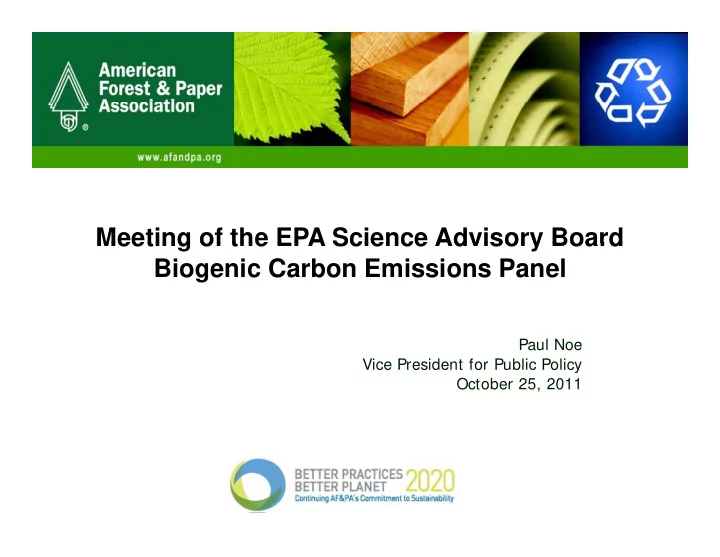

Meeting of the EPA Science Advisory Board Meeting of the EPA Science Advisory Board Biogenic Carbon Emissions Panel Paul Noe Vice President for Public Policy October 25 2011 October 25, 2011
U.S. forests have national growth/drain ratio of 1.7 U.S. forests sequester over 800 million metric tons of CO 2 per year Research indicates that strong demand for forest products provides incentives to keep forestland forested forested 2
The manufacture of pulp and paper requires the processing of pulpwood or wood chips The wood is harvested for the purpose of making paper, but a large portion of the residues are used to generate energy. The use of these residues to generate heat and electricity significantly reduces fossil fuel and purchased electricity requirements of pulp and paper mills. The EPA report correctly regards emissions associated with energy use from these residues as “anyway” emissions. The residues are principally the result of harvesting wood to make paper and would have released CO 2 from decay anyway. p p y y y 2 3
Regarding mill residues, the EPA report (p. 30) states the following: g “Mill residues…from saw mills typically include… bark , while…pulp mills also include lignin and other wood components, black liquor, or liquid fuels such as cellulosic ethanol. Most of this material is currently burned for energy or heat at the material is currently burned for energy or heat at the facilities…(Johnson, 2001).” Regarding residues that a pulp mill obtains from a wood products mill, the report (p. 99) observes: Because residues are a secondary forest-derived biomass from y other wood processing mills, the assumption is that if not burned for energy at this plant, the feedstock would have been burned or decayed elsewhere, with or without energy productions, resulting in the same level of emissions. 4
According to data cited by the EPA report, the distribution of wood consumption by a Kraft pulp mill is as follows: Approximately 36% winds up in the product About 54% is used to generate energy (largely black liquor, bark and logging residues), The balance is incorporated in marketable byproducts such Th b l i i t d i k t bl b d t h as turpentine and soap, or winds up in the mill’s waste treatment system. 5
In conclusion: The framework must be science-based and cost- The framework must be science based and cost effective Confirm that emissions from logging residues and Confirm that emissions from logging residues and manufacturing byproducts (e.g., black liquor and bark) are “anyway” emissions regardless of growth/drain ratio th/d i ti We support the “reference point” baseline approach approach Thank you 6
Recommend
More recommend